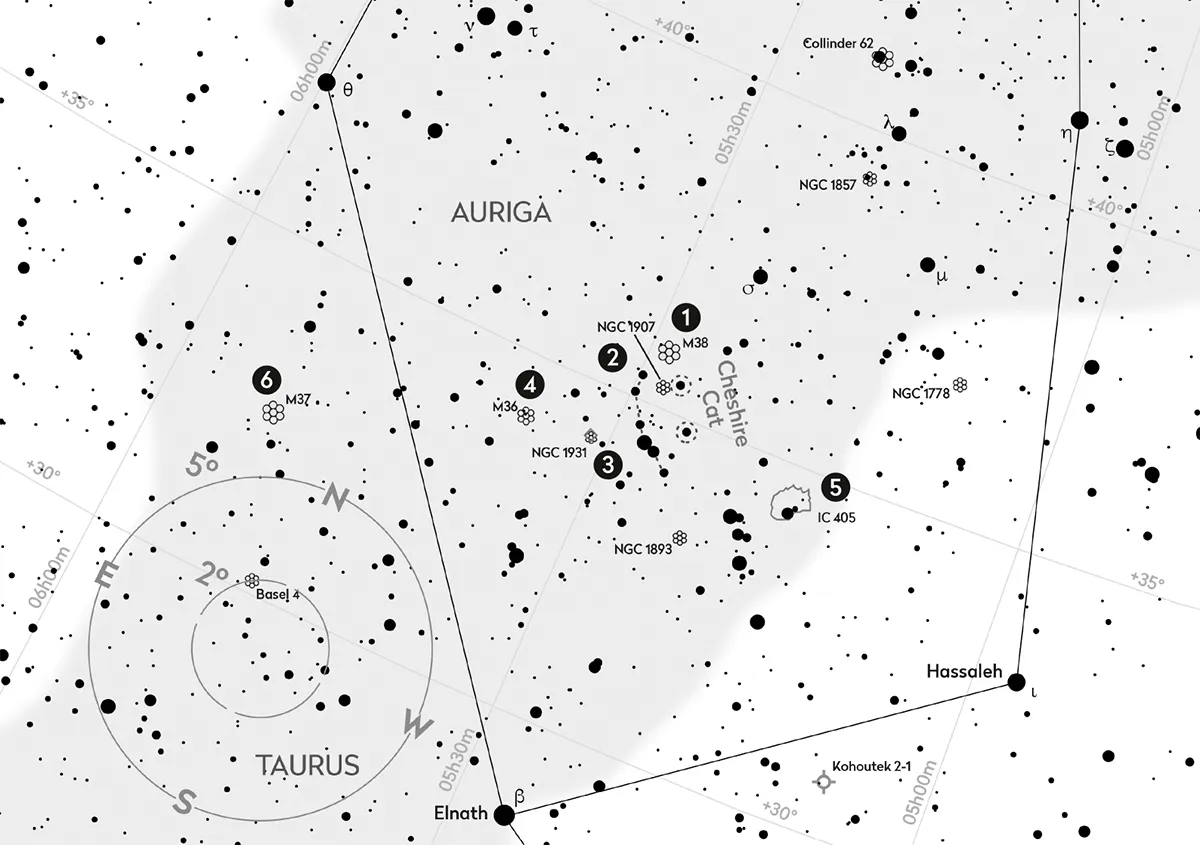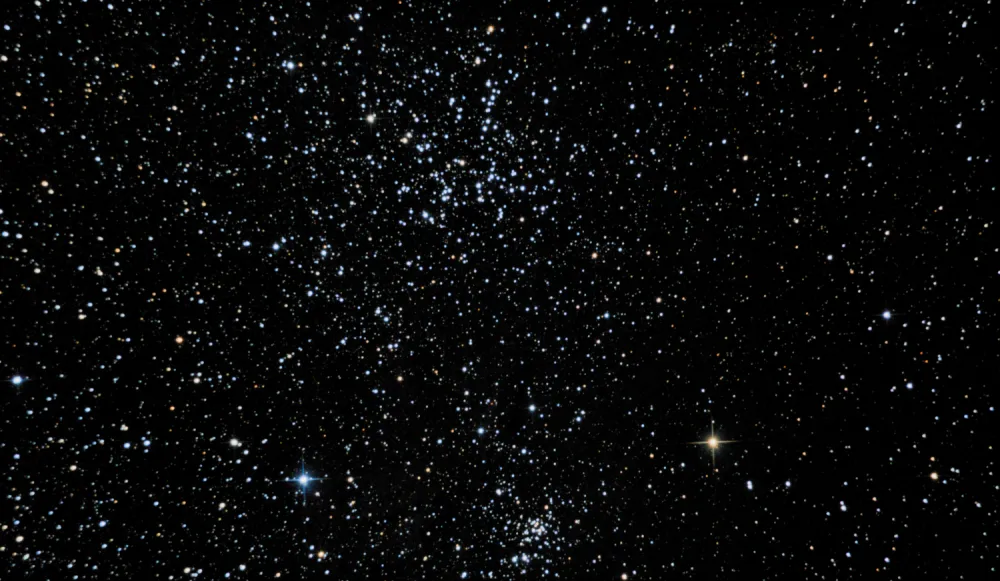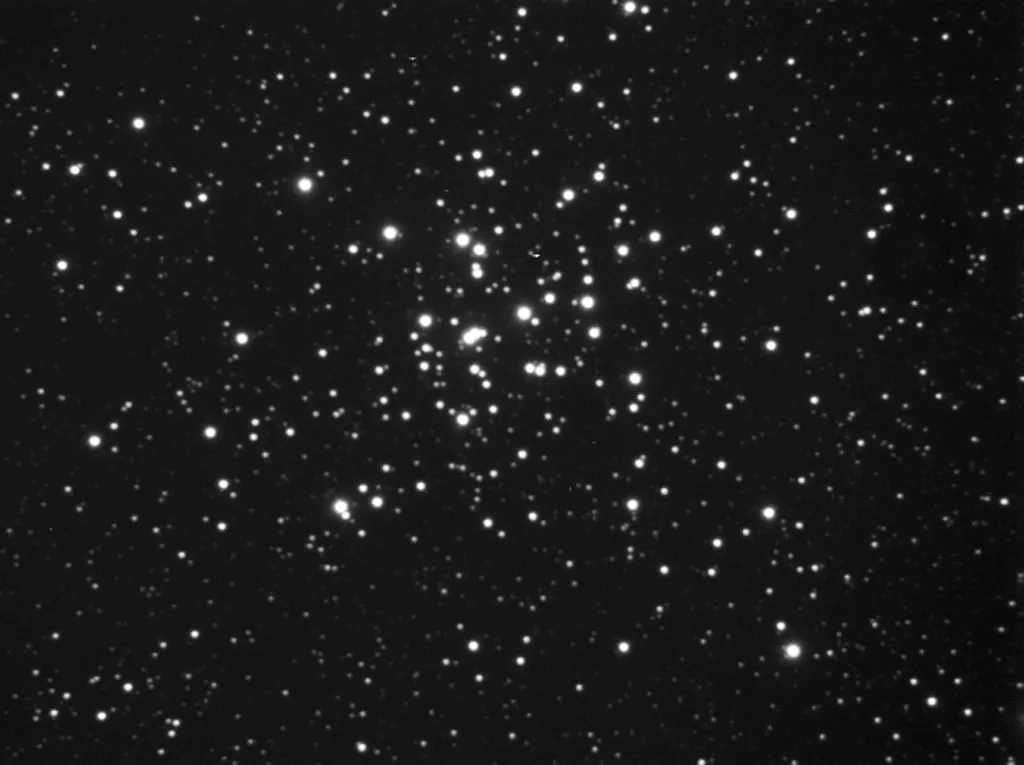In this deep-sky tour we'll explore a series of beautiful open clusters - and a beautiful nebula - that can be found in the constellation of Auriga, the Charioteer.
All of these targets can be seen using a small or medium telescope such as a reflector or Schmidt-Cassegrain under 6 inches, or a refractor under 4 inches. The exception is the magnificent Flaming Star Nebula, which really needs a large telescope - such as a reflector or Schmidt-Cassegrain over 6 inches or a refractor over 4 inches - to do it justice.

Of course, all of the targets will be best seen with a larger aperture telescope. See if you can tick off all of the open star clusters and the nebula on our list. Happy observing and clear skies!
More deep-sky tours:
- 6 deep-sky objects around Polaris
- 8 Messier Objects to spot in the night sky
- 6 planetary nebulae to spot in the night sky
1
M38

M38 is a mag. +6.4 open cluster in Auriga, located mid-way between Hassaleh (Iota (ι) Aurigae) and Theta (θ) Aurigae. It sits at the northeast end of a curving line of mag. +6.0 and +7.0 stars that forms the smile of the Cheshire Cat asterism.
The cluster is rich with a good distribution of bright and dim members. Through a 150mm scope some of the brighter stars appear to form a cross or, with a bit of imagination, a shape that resembles a starfish. A 250mm instrument reveals around 100–150 members within an area 20 arcminutes across.
2
NGC 1907

M38 makes a good comparison with our next target, NGC 1907, which sits 34 arcminutes south and a bit west of M38. This is an old cluster with an estimated age of 500 million years. M38 by comparison is estimated to be half that age at 250 million years. NGC 1907 is also further away at 4,500 lightyears.
Shining with an integrated magnitude of +8.2, NGC 1907 is compact, appearing one-sixth the size of M38. Around 30 stars can be seen with a 150mm scope, increasing to 40 when you double the aperture. The cluster is framed by a triangle of mag. +6.2, +6.8 and +6.9 stars. Analysis of M38 and NGC 1907 suggests both were formed in different regions of the Galaxy and are experiencing a celestial ‘fly-by’.
3
NGC 1931

Head back to M38 and then 100 arcminutes south-southeast for diffuse nebula NGC 1931. This object has emission and reflection regions, revealed by long exposure photography as an attractive composition of reds, pinks and blue-grey colours. It shines with an integrated magnitude of +11.3 (more on this in our guide to stellar magnitude) and although visible through smaller instruments, benefits from extra light grasp.
Through a 150mm scope, the most obvious feature is a tight group of three stars. Under dark-sky conditions a glow is visible around them. A 250mm scope shows four stars in a tight cluster at the glow’s centre. This is the emission component, the reflection nebula sitting to the south. NGC 1931 is likened to a small Orion Nebula, a good description as NGC 1931 is just 3 arcminutes across.
4
M36

M36 is one of the famous Auriga trio of open clusters in the Messier Catalogue, along with M37 and M38. It lies 2.3˚ southeast of M38 or, from our last target, 1˚ to the east of NGC 1931. It’s a lovely cluster that shines with an integrated magnitude of +6.0.
Visually, M36 appears smaller than M38. Its apparent diameter is around 12 arcminutes, so almost half the size of M38. The main impression from the cluster through smaller instruments comes from the 10 or so members that shine brighter than mag. +10.0. A 300mm scope reveals as many as 70 members within this cluster.
5
IC 405

Before visiting the final Messier cluster in the Auriga trio, deviate west to dim IC 405; the Flaming Star Nebula. This sits 4.1˚ west of M36 and requires a larger aperture, dark skies and a hydrogen-beta filter to see properly. Actually, let’s not mislead here, because given a good dark sky, it is possible to see IC 405 using a hydrogen-beta filter through apertures as small as 100mm.
It surrounds irregular variable AE Aurigae, which shines at mag. +6.0 and deviates between mag. +5.8 and +6.1. AE Aurigae is a runaway star that’s likely to have been ejected from the Trapezium Cluster at the Orion Nebula’s heart.
6
M37

We leave the faintness of IC 405 to view the final member of the Auriga Messier trio, M37. This sits 3.8˚ southeast of M36 and at mag. +5.6 is the trio’s brightest. It’s also the richest; a visual delight through any instrument size. It’s about 20 arcminutes across and well concentrated. Smaller instruments may show it as a partly resolved haze of stars. A 250mm or larger scope is required to resolve it fully.
The compact nature of the cluster’s core region can make it tricky to identify all of the member stars. M37 is located near the intersection of the Galactic Equator and Galactic Meridian, placing it almost opposite the direction of the Milky Way’s core as seen from Earth.
Have you completed our tour? Did you manage to capture an image of any of the targets? Let us know by getting in touch via contactus@skyatnightmagazine.com or on Facebook, Twitter and Instagram.
Pete Lawrence is an experienced astronomer and co-host of The Sky at Night. This tour originally appeared in the February 2020 issue of BBC Sky at Night Magazine.
